“Native Plants: Why We Love Them and How to Use Them” – Free Seminar – This Saturday at Walker Farm in Southern Vermont – Please Join Me …
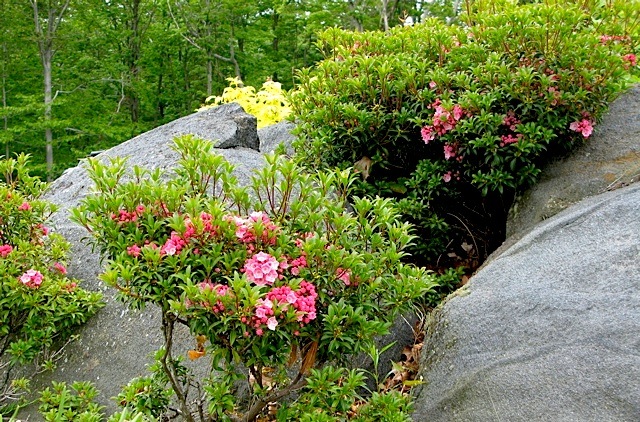 Native mountain laurel, Kalmia latifolia, (here a cultivar named ‘Pink Charm’), are durable, evergreen plants suitable for ledgy, exposed sites… far more hardy than their more tender cousins, the rhododendrons. To read more about Kalmia latifolia, click here.
Native mountain laurel, Kalmia latifolia, (here a cultivar named ‘Pink Charm’), are durable, evergreen plants suitable for ledgy, exposed sites… far more hardy than their more tender cousins, the rhododendrons. To read more about Kalmia latifolia, click here.
I am very fortunate. This place in Vermont, where I live, is a true paradise and I cherish it. Every morning I wake up to the beautiful sights, sounds and smells of the Northeast American native forest. The songs of the veery, hermit and wood thrush, the mist rising from the Green River valley and the fragrance of the woodland surrounding my home relax and comfort me. Of course, I am not alone – many people, including a great number of my friends, share this passion for the native forest, and I love hearing about their woodland hikes, experiences and discoveries. I have also traveled throughout North America, and I know that every spot I have visited on this continent -as well as those I have yet to see- has it’s own unique and irreplaceable natural environment. This great love of nature is part of the reason that our native plant species are so important to me. There are many, many beautiful trees, shrubs and herbaceous plants all over the world -and I do have quite the collection of exotics growing here in my garden- but none more beautiful or important than those growing naturally outside my front door.
As is often the case with horticultural terms and phrases, native plant can have different definitions and meanings, depending upon the source of the information. In the strictest sense -and according to The New England Wild Flower Society–  when describing woody plants and perennials on this continent, the term native “refers to plants growing in North America before the European settlement”. Does this definition include species cultivars that have occurred since the European settlement through natural selection? I imagine so. But I would expect that the NEWFS definition excludes individual cultivars and hybrids created via the hand-of-man. My own definition of  native plant is somewhat looser and more tolerant of the various seedlings and crosses commonly found in gardens and in the nursery trade – but I’m no research scientist. Perhaps because one of my favorite North American native trees, Serviceberry, (Amelanchier) , is a horticultural wild-child, (freely hybridizing with neighboring species within the genus), I see the process of plant evolution as inevitable and fascinating. Mother nature seems to approve of variety, as do I !
 Beautiful, spring blooming trees of the forest understory, such as North American native Halesia tetraptera, are excellent choices for home landscapes…
Beautiful, spring blooming trees of the forest understory, such as North American native Halesia tetraptera, are excellent choices for home landscapes…
Beyond their obvious importance in the natural ecosystem, native plants also make fantastic additions to the garden. In fact so many North American native species, such as coral bells, (Heuchera), coneflower, (Echinacea), gayfeather, (Liatris), and cranesbill, (Geranium), have become such superstars in the nursery trade, that many gardeners have no idea that many common garden center plants are actually wild-flower cultivars. As far as I am concerned, that is good news because native plants, and nursery-grown native cultivars, provide season-spanning food and habitat for local animals and insects, and they also tend to require less water, commercial fertilizer and chemical support than imported plants. And again, I am no purist when it comes to my own garden. I have a great passion for exotic plants – especially Japanese maple! However, I make every effort to garden responsibly, both in my own private paradise, and in the various landscapes where I work as a professional gardener and designer.
This Saturday morning, (May 15, 2010, from 9:30 – 10:30), I will be presenting a free, introductory seminar on native plants for home gardeners at Walker Farm in Dummerston, Vermont. If you are in the area, and you would like to learn more about how to use some of these incredibly beautiful and hardy plants in your own landscape, please stop in and join the fun. The emphasis will be on home garden design; creating season-spanning interest, and wildlife support in your back yard oasis, by choosing trees, shrubs and perennials native to the Northeastern United States. Examples of lesser-known native plants will be on display, and free color handouts, (including design tips, plant information, and online resources), will also be provided. Visit Walker Farm online or call 802 – 254-2051 for more information.
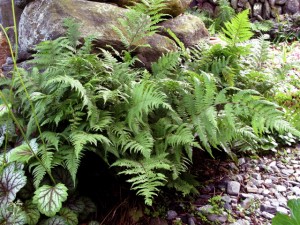 Native Lady fern, (athyrium felix feminina), and selected cultivars such as ‘Lady in Red’, shown here, provide shady habitat for toads and frogs, and durable but delicate beauty for dappled gardens… Especially in combination with other natives such as Heuchera and Phlox divaracata.
Native Lady fern, (athyrium felix feminina), and selected cultivars such as ‘Lady in Red’, shown here, provide shady habitat for toads and frogs, and durable but delicate beauty for dappled gardens… Especially in combination with other natives such as Heuchera and Phlox divaracata.
 An excellent ground-covering choice for acidic, shady areas, native labrador violets are stunners whether blooming or not…
An excellent ground-covering choice for acidic, shady areas, native labrador violets are stunners whether blooming or not…
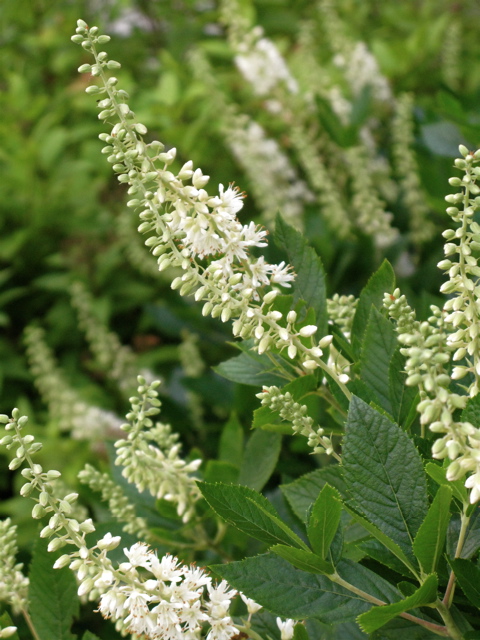 Clethra alnifolia, our native summersweet, is a low-maintenance shrub producing pollinator-magnet flowers in late summer…
Clethra alnifolia, our native summersweet, is a low-maintenance shrub producing pollinator-magnet flowers in late summer…
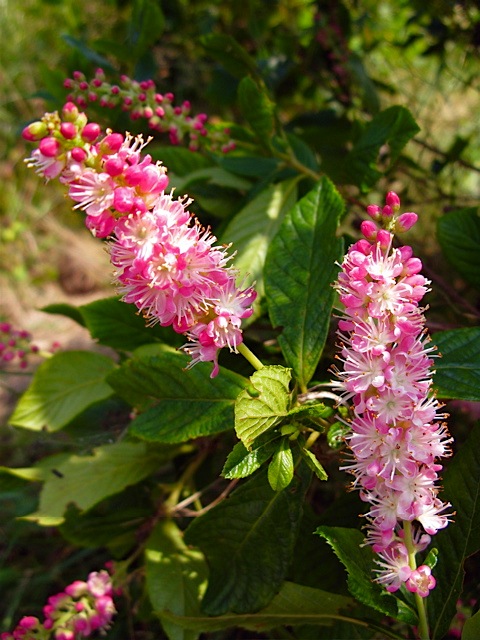 Clethra alnifolia ‘Ruby Spice’ is a lovely, select pink-flowering cultivar of our native summersweet shrub, shown above
Clethra alnifolia ‘Ruby Spice’ is a lovely, select pink-flowering cultivar of our native summersweet shrub, shown above
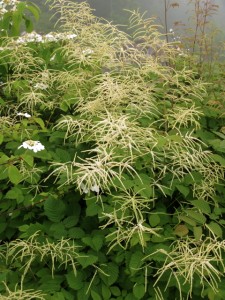 Aruncus, commonly known as the ‘goat’s beard’, is a statuesque June bloomer for perennial borders and woodland edge…
Aruncus, commonly known as the ‘goat’s beard’, is a statuesque June bloomer for perennial borders and woodland edge…
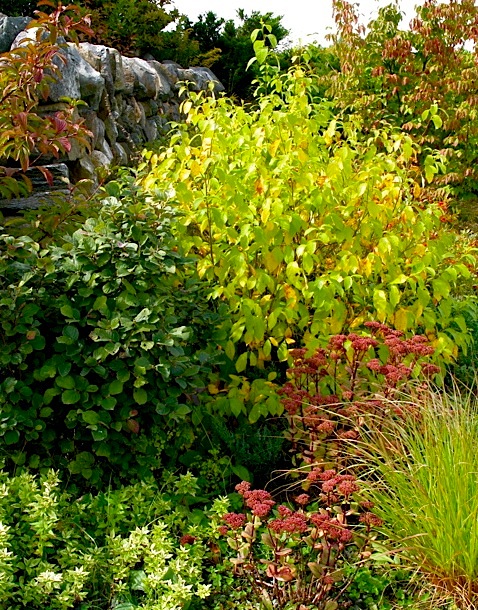 Fothergilla major, (witch alder), and Lindera benzoin,(spicebush), provide a changing backdrop for gardens all season long…
Fothergilla major, (witch alder), and Lindera benzoin,(spicebush), provide a changing backdrop for gardens all season long…
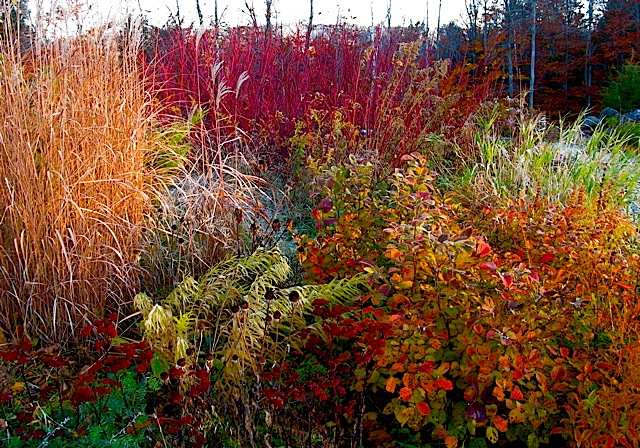 By combining native shrubs and cultivars, a natural but dynamic, sustainable design can be achieved…
By combining native shrubs and cultivars, a natural but dynamic, sustainable design can be achieved…
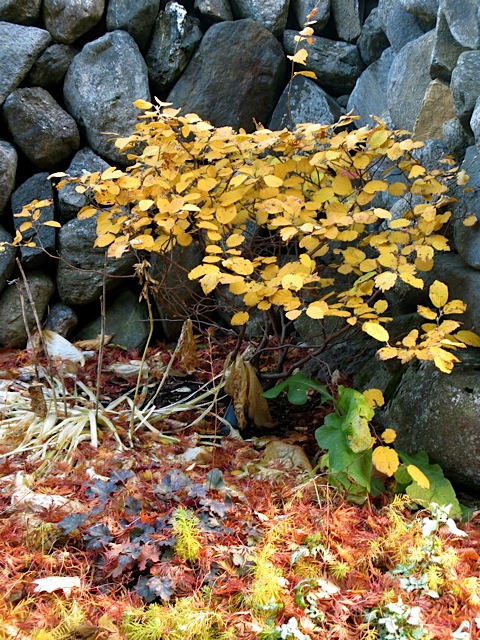 Fothergilla gardenii, our native witch alder, lights up the garden in spring and again in late autumn…
Fothergilla gardenii, our native witch alder, lights up the garden in spring and again in late autumn…
***
For further information on native plants, I highly recommend the following books by Allan Armitage and William Cullina; two accomplished, renowned, horticulturalists and brilliant and poetic authors I admire…
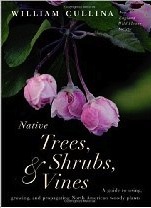 William Cullina – Native Trees, Shrubs, and Vines
William Cullina – Native Trees, Shrubs, and Vines
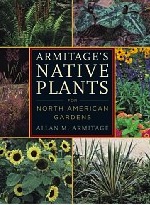 Armitage’s Native Plants for North American Gardens
Armitage’s Native Plants for North American Gardens
Article and photographs copyright 2010, Michaela at TGE
All content on this site, (with noted exceptions), is the property of The Gardener’s Eden and may not be used or reproduced without prior written consent. Inspired by something you see here? Great! Please give credit where credit is due. It’s a small world and link-love makes for fond friendships. Stealing makes for bad dreams…
Do you enjoy visiting The Gardener’s Eden? You can help support this site by shopping through our affiliate links. A small percentage of any sale originating from The Gardener’s Eden site will go toward web hosting and maintenance costs. Thank you for your support!
***
One Reply to ““Native Plants: Why We Love Them and How to Use Them” – Free Seminar – This Saturday at Walker Farm in Southern Vermont – Please Join Me …”
Comments are closed.
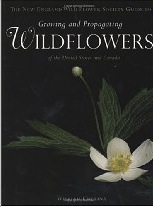


I’m so sorry I missed the seminar. I’ve struggled with this topic, wanting to plant more natives, but not really understanding how to do it well. Your photos are beautiful, so it’s clear it’s possible!